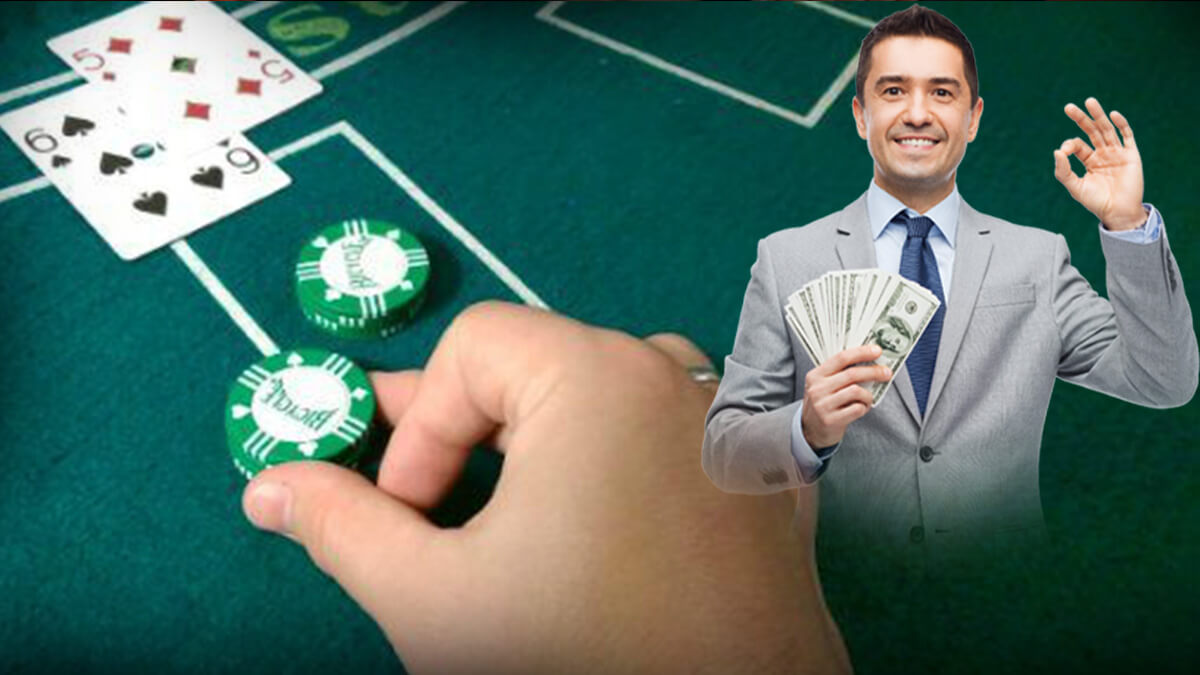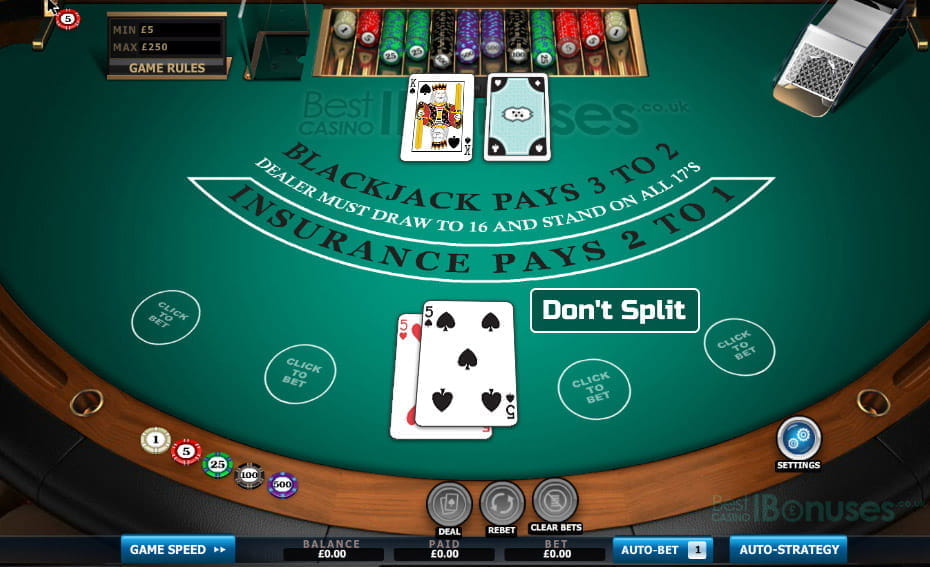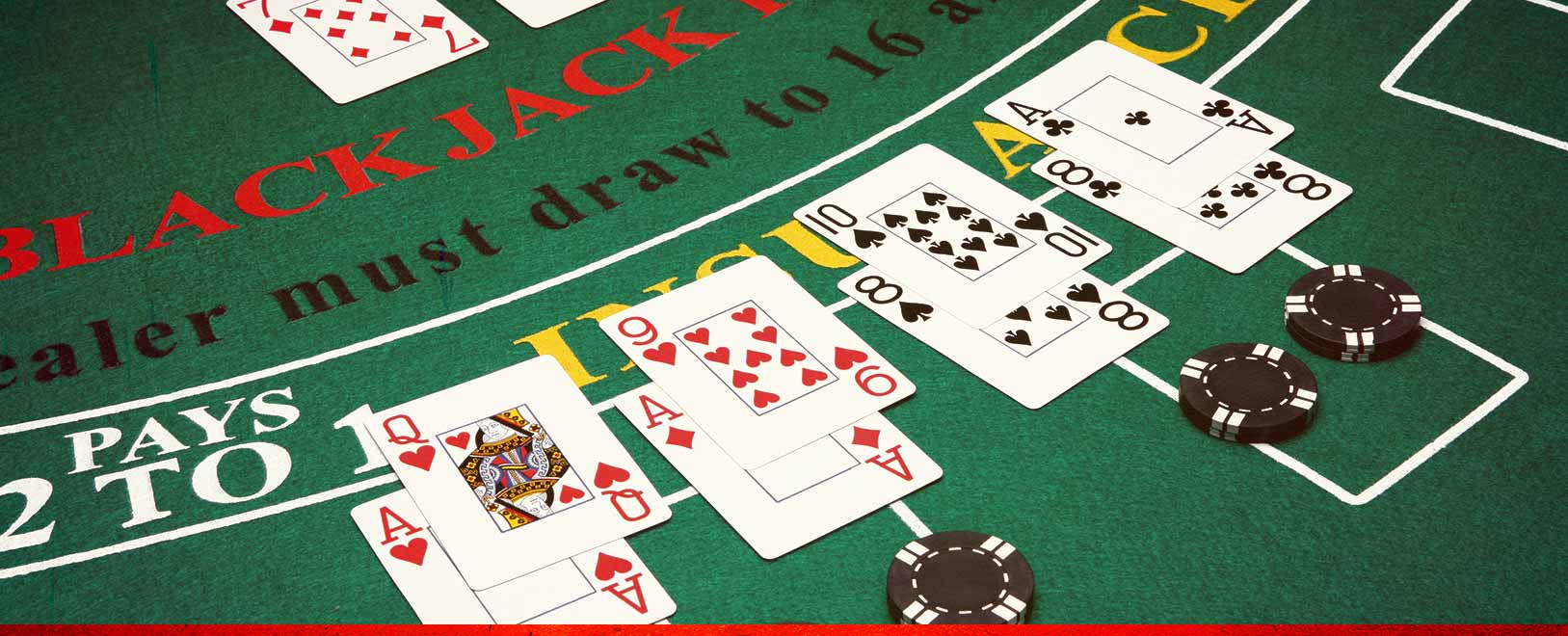Blackjack Splitting Cards
Blackjack is considered to be one of the most complicated games to play, so many professional players share their gaming experience and knowledge to help others. This is how was the basic blackjack strategy created with such a helpful blackjacks strategy chart! If players want to become real blackjack gurus, they have to learn how to play blackjack and then master their skills constantly by practicing online, playing with skilled players and also reading blackjack books or watching the educational movies on this subject.
But no one wants to lose a lot during their learning, of course. That is why it is recommended to make use of basic strategies which contain sets of the best moves, which may be made by players. Those moves guide were created by professional players, who played blackjack for a long period of time and understood the dependence of the card which have been dealt already and cards, which are still in the shoe.
Those strategies were developed according to the hands that players have. There are special basic strategies for hard and soft hands. But there is also one more type of blackjack hand – hand where two cards are of the same rank. In this situation players should use the Strategy for Splitting Pairs.
In blackjack, the standard rule is that if the player is dealt a pair of identically ranked initial cards, known as a pair, the player is allowed to split them into separate hands and ask for a new second card for each while placing a full initial bet identical to the original wager with each. There are some best hands to split in blackjack. Looking at the table, consider that ace and 10 are the strongest cards or combinations, and 4, 5, and 6 are the weakest. This statement is based on complex mathematical calculations and should be accepted as an axiom. Let’s see the explanation for when to split in blackjack.
Here is presented the basic strategy when playing blackjack with a hand that consists of a pair. This is also called the splitting pairs strategy.
Player's hand | Dealer's hand | Basic rules | |
A pair of 2s, 3s or 7s | 2, 3, 4, 5, 6 or 7 | Split or Hit | |
A pair of 4s | 5 or 6 | Split or Hit | |
A pair of 6s | 2, 3, 4, 5 or 6 | Split or Hit | |
A pair of 8s or Aces | Always Split | ||
A pair of 9s | 2, 3, 4, 5 or 6 | Slit | |
A pair of 9s | 8 or 9 | Split | |
A pair of 9s | 7, K or Ace | Stand | |
A pair of 5s and 10s | Never split | ||
Nowadays, blackjack enthusiasts are well aware of the options they can utilize while playing the game of 21. One of the features that players can resort to is splitting their pairs and form two or more hands to play with. The idea of splitting two 8s when the dealer is showing 9 or 10 was introduced back in the late ’50s by James McDermott, Roger Baldwin, William Cantey, and Herbert Maisel who are also known as the Four Horsemen of Aberdeen. A few years later, this move became very popular among blackjack players and nowadays it is used in numerous variations of the game.
Although splitting is an option which gives players the chance to enjoy a better outcome, there are instances when splitting is not recommended. Players are advised to always get accustomed to the specific splitting rules of the game they are about to play. There are also a few tips to remember when it comes to splitting which will allow you to enjoy your blackjack experience to the fullest. In this guide, we will introduce you to all key aspects of splitting in blackjack so that you can play like a true professional.
What is Splitting in Blackjack?
Whenever players are dealt a pair, most virtual blackjack variations will allow them to split their cards and form two separate hands. Those who decide to split their pair will have to make another wager, equal to their ante bet. This would mean that players will be betting on two hands at the same time. In addition to pairs, some blackjack variations also allow players to split two different face cards with the same pip value of 10.
Depending on the blackjack variation and the rules it utilizes, players who split may be enabled to draw either a single card or a few cards from the deck. Some games also allow players to double down on the cards they have split which would add one card to the hand. After a split, one would play each hand individually and choose whether to hit or stand. Some blackjack games would allow players to re-split, provided they have another pair. This will further increase the number of hands to play with and would also imply additional bet to the newly formed hand.
Even though some games may allow several splits, often this rule does not apply to Aces. In many cases, Aces can be split only once and players often are restricted only to a single draw after the split. What is more, often split Aces in a combination with 10-value cards do not count as natural blackjack hands.

Since there are perks and disadvantages to splitting and re-splitting, players should always be aware of the particular rules of the exact blackjack variation they are about to play.
When You Should Split?
Depending on the course of the game, the rules of the particular variation and the pair you are holding, there are instances when players are advised to split. Of course, there are also moments where players should refrain from using this option and opt for a different strategy.
There are a couple of hands when players are always advised to split and some totals which you are better off without splitting. In addition to the total of your hand, it is also important to take into consideration the faceup card of the dealer as it also affects the splitting strategy in blackjack.

Hands You Should Always Split
While you can split any pair, you are not advised to make this move on every hand. There are, however, a couple of pairs which you should always split as this will give you the best chances of a win.
One of the most obvious hands that players are always advised to split is a pair of Aces. In combination, two Aces total to a soft 12 which is definitely not a strong hand. If you opt for a split, however, you increase your chances of a higher total and maybe even two hands of 21. It quickly becomes clear that splitting Aces is always the right move when playing blackjack.
Despite the splitting of Aces being an ultimate move, many players avoid making it as they feel that some blackjack variations have way too restrictive rules. Many of the blackjack variants you find online will count a split Ace and a 10-value card as a simple total of 21, instead of as a natural blackjack. This, of course, will lower the payout to even money instead of the standard 3 to 2. In addition to this rules, there are also various games which will allow players to draw only a single card to a split Ace which is sometimes very restricting and can lower the player’s chances of landing a winning hand.
While the aforementioned rules might sound like the game is trying to outcheat players, those who are willing to take a look at the odds of the game will realize that splitting Aces is the optimal move. If you think about it, if you do not split the Aces, you have soft 12. Splitting, however, will give you two hands, each of which is 11 and can further improve with the following draw.
It should be noted that splitting the Aces would mean doubling your wager but if both of your hands end up winning, you will enjoy a better payout than what you would have if you stay with your soft 12 and continue playing. Of course, no strategy is completely failproof as there are instances when players would get soft 13 after splitting Aces. However, the chances of landing a strong hand and winning against the dealer are pretty good to ignore them.
Another hand you should always split is a pair of 8s which if not split, ends up being a hard 16. This is a total which is difficult to play and can often lead either to going bust or losing to the hand of the dealer.
If you decide to split a pair of 8s, however, you have pretty good chances to end up with two hands of 18 which is a hand that often can beat the dealer. Despite this reasoning, many players avoid splitting 8s when the dealer is holding a 10. This is definitely a risky situation and splitting the 8s may simply lead to doubling your bet and suffering a bigger loss. However, it has been estimated that, in the long run, splitting the 8s against a dealer’s 10 will cost fewer losses than simply playing with hard 16. Sometimes the strategy in blackjack is about experiencing fewer losses rather than enjoying a win every time.
Hands You Should Never Split
While splitting is often a great idea in blackjack, there are some instances when players are not advised to make this move. Whenever you are holding a pair of 9s or 10s, you should avoid splitting. This is due to the fact that hard 18 or hard 20 are good hands, to begin with, and you have better chances of winning as it is than playing with two hands of 9 or 10. While splitting 10s may sometimes lead to two hands totaling to 21, the right move is to refrain from splitting as the risk is too high. This being said, if the dealer reveals a card with a lower value, you can opt for splitting high pairs.

A pair of 5s is also not a great hand to split in blackjack. If you are playing with your original hand, you start with hard 10 and you have great chances of improving your score and beating the dealer. Splitting, however, can sometimes leave you with two hands of hard 15 and this is a difficult total to beat the dealer with. The same applies to a pair of 4s as splitting them will leave you with two hands with a low value. In the end, splitting 5s and 4s is riskier than playing without splitting your pair.
Splitting According to Dealer’s Upcard
Despite the fact that some hands should not be split when playing blackjack, this rule can easily change depending on the faceup card of the dealer. Even if you are holding a pair of low-value cards, when the dealer is showing anything between 2 and 7, you are advised to split your pair. Since keeping a hand of two deuces, for example, will not draw to a high total, you have the chance to form two better hands by splitting them when the dealer is also showing a weak hand.
If you are holding a pair of 6s and the dealer shows anything between 2 and 6, then you are, yet again, advised to split. As the faceup card of the dealer means that he/she might need to draw again and go bust, you have good chances by splitting the 6s and possibly land two 16 hands.
Another instance when you are advised to split is when the dealer is showing 2, 3, 4, 5, 6, 8 or 9 and you are holding two 9s. While earlier it was mentioned that you should not split high pairs, this rule can be ignored when the dealer is showing one of the aforementioned cards. If the dealer has anything between 2 and 6, he/she might have to draw again and possibly go bust, while 8 and 9 might indicate that he/she might be holding a strong hand of 18 or 19. In such cases, players might have good chances of winning by splitting their 9s and forming two different hands to play with.

Blackjack Splitting Cards Poker
Splitting Rules in Different Blackjack Variations
While the majority of blackjack variations will allow you to split any pair you are holding, often there are specific rules when it comes to Aces. While some variants of the game of 21 will allow players to double down and draw as many cards after a split, this is not always the case. Some blackjack variants will allow a single draw after you have split your pair. Even if you have the chance to double down and add a card to your split hand or you are allowed to hit as many times as you wish, often this rule does not apply to split Aces.
Blackjack Splitting Cards For Cash
The fact that often players can draw only a single card to split Aces, motivates many blackjack fans to refrain from splitting this pair. As it was explained earlier, however, this is not the optimal decision when aiming for the best results.
Blackjack Split Face Cards
Some variants of blackjack also offer bonus payouts for special hands. Some blackjack games offer a payout for a 5-card Charlie which is a hand comprised of 5 cards, without going bust. In such cases, splitting is definitely not the best move. If you have low-value cards, however, you can still opt for a split. Since a 5-card hand is hard to pull off, you should think carefully whether it is better to split or opt for this rare combination.